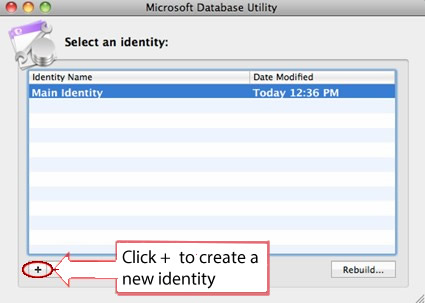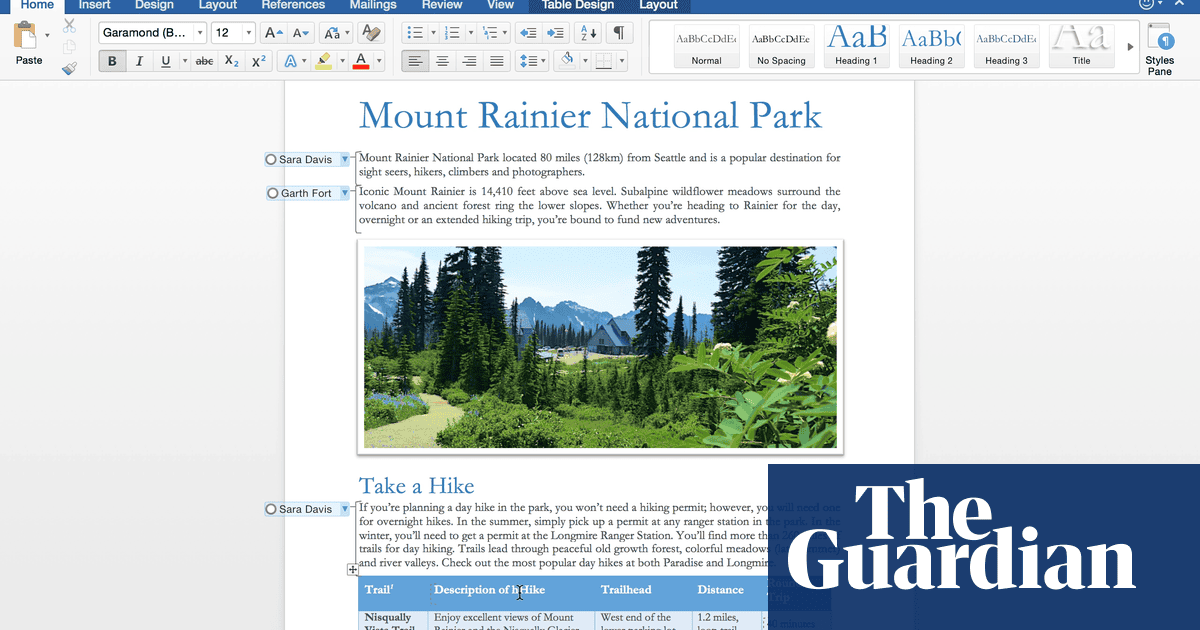Microsoft Outlook Identity Mac
Note: The ability to manually repair or rebuild a database is not available in Outlook 2016 for Mac. If a problem such as Outlook data corruption occurs, Office 2016 for Mac automatically repairs and rebuilds the Office database for you. For more information, see About the Office 2016 for Mac database.
Outlook 2011for Mac has a special folder within the Mac OS X Finder called Office 2011 Identities. Just like it sounds, this special folder contains everything about your Outlook activities. Inside the Office 2011 Identities folder, Outlook stores one folder for each individual Identity. The name of the folder is the name of the Identity.
- Rebuilding Main Identify window will open and show the progress. When the operation is completed, you will receive the message “Your database was rebuilt successfully.”. Start Outlook 2011 application and verify if the problem is resolved. If the problem is resolved, proceed to access Outlook 2011 for Mac but if the problem still persists, proceed to create a new Identity to further.
- In Microsoft Outlook 2016 for Mac, you are repeatedly prompted for authentication while you're connected to your Office 365 account. This issue occurs because of the presence of duplicate tokens in the keychain. To resolve this issue in Outlook 2016 for Mac, install the February 2017 Outlook update (version 15.31.0) from the.
- This article describes how to rebuild the identity database to resolve problems in Microsoft Outlook for Mac 2011. The identity contains a set of email messages, contacts, tasks, calendars, accounts settings, and more. Your identity is located in the Microsoft User Folder data.
Each Identity folder stores your e-mail, account information, calendar events, tasks, and notes in a database for each Identity.

For Outlook 2011, the structure of an Identity folder is completely new. Outlook now treats each item within an Identity as a discreet file. Each e-mail, calendar event, or task is stored as its own file. This means Time Machine backups for your Identity can take a fraction of a second instead of several minutes or longer as it sometimes did in Entourage. Spotlight searching is much improved as a beneficial side effect.
By default, Outlook makes an Identity for you called Main Identity, which stores your first e-mail account’s information. It’s a good idea to learn where your Identity folder is located, if for no other reason so that you know not to delete or move it. Use Mac OS X Finder application (on your Dock) to navigate your file system.
Keep in mind that when you upgrade or add an e-mail account, calendar, task, or note, the information is stored within an Identity.
These scenarios illustrate times when having more than one Identity is desirable:
Microsoft Outlook Identity Mac Download
Separation of work and private life e-mail accounts: Your work may require you to have an IMAP account, a Gmail account, and an Exchange account, but you want to keep your personal e-mail accounts, contacts, tasks, and notes from mixing in with your business activities. Use one Identity for work and another for your private life.
Keeping jobs independent: Perhaps you work two or more jobs and don’t want to intermingle mail, calendars, and so on. Making an Identity for each job can help you keep your jobs from getting crossed.
Oct 01, 2017 If you look up Microsoft Project then it tells you that it can only be downloaded to a Windows 7 or 8 machine. It does not make any difference whether you have Microsoft Office installed or not - they are 2 separate questions, so your answer is still NO, NO and NO. It is a Microsoft only programme and cannot be run on a Mac. Mar 19, 2020 Protect Yourself From Tech Support Scams Tech support scams are an industry-wide issue where scammers trick you into paying for unnecessary technical support services. You can help protect yourself from scammers by verifying that the contact is a Microsoft Agent or Microsoft Employee and that the phone number is an official Microsoft global customer service number. Office 2019 (for both Windows and Mac) is a one-time purchase and does not receive feature updates after you purchase it. Office 2019 includes a meaningful subset of features that are found in Office 365, but it's not part of Office 365. Office 2019 will receive quality and security updates as required. Dec 03, 2019 Unfortunately Microsoft Project, also known as MS Project, wasn’t designed for Mac computers, so it won’t work on any version of Mac OS. But there is a workaround that can solve your problem. It’s not complicated, and in fact, it’s easier to use than the MSP interface.
 With the release of macOS 10.15 Catalina,Office 365 for Mac and Office 2019 for Mac support macOS 10.15, 10.14, and 10.13. Moving forward, as new major versions of macOS are made generally available, Microsoft will drop support for the oldest version and support the newest and previous two versions of.
With the release of macOS 10.15 Catalina,Office 365 for Mac and Office 2019 for Mac support macOS 10.15, 10.14, and 10.13. Moving forward, as new major versions of macOS are made generally available, Microsoft will drop support for the oldest version and support the newest and previous two versions of.Organization support: If you take care of the e-mail for a club or organization, make a separate Identity to keep that mail segregated.
Special event: If you manage a special event, such as a conference, webinar, or colloquium, starting a new Identity and e-mail account for the event is the perfect way to manage things.
Symptoms
In Microsoft Outlook 2016 for Mac, you are repeatedly prompted for authentication while you're connected to your Office 365 account.
Cause
This issue occurs because of the presence of duplicate tokens in the keychain.
Resolution
To resolve this issue in Outlook 2016 for Mac, install the February 2017 Outlook update (version 15.31.0) from the following Office website:
Workaround
To work around this issue, delete any cached passwords for your account, and also delete any modern authentication tokens from the keychain. To do this, follow these steps.
Microsoft Identity Manager 2016
Note
These steps affect all Office applications that use modern authentication.
Asp Identity
Quit Outlook and all other Office applications.
Start Keychain Access by using one of the following methods:
- Select the Finder application, click Utilities on the Go menu, and then double-click Keychain Access.
- In Spotlight Search, type Keychain Access, and then double-click Keychain Access in the search results.
In the search field in Keychain Access, enter Exchange.
In the search results, select each item to view the Account that's listed at the top, and then press Delete. Repeat this step to delete all items for your Exchange account.
In the search field, enter adal.
Select all items whose type is MicrosoftOffice15_2_Data:ADAL:<GUID>, and then press Delete.
In the search field, enter office.
Select the items that are named Microsoft Office Identities Cache 2 and Microsoft Office Identities Settings 2, and then press Delete.
Quit Keychain Access.
Note
When you start Outlook, you are prompted to authenticate.
